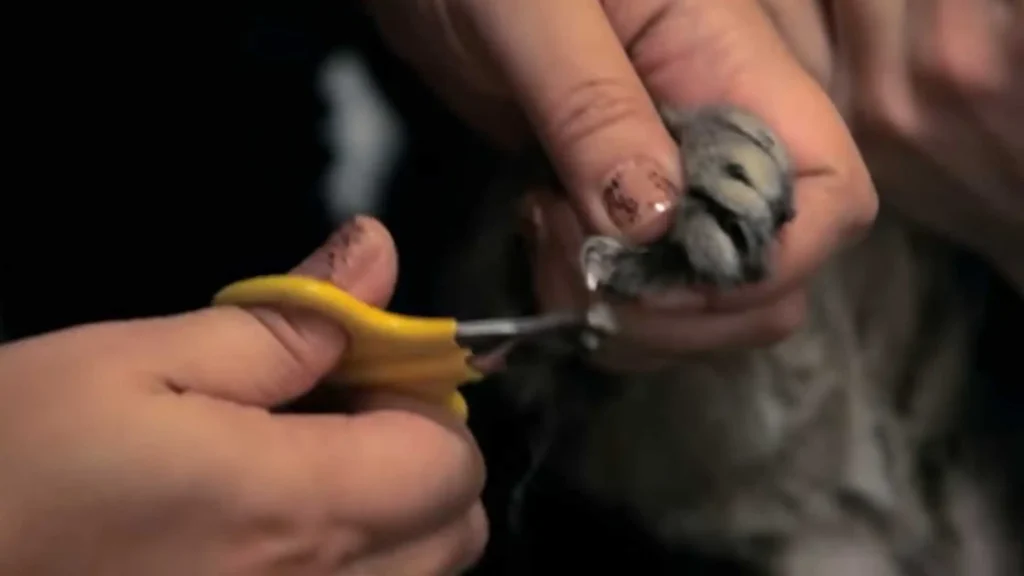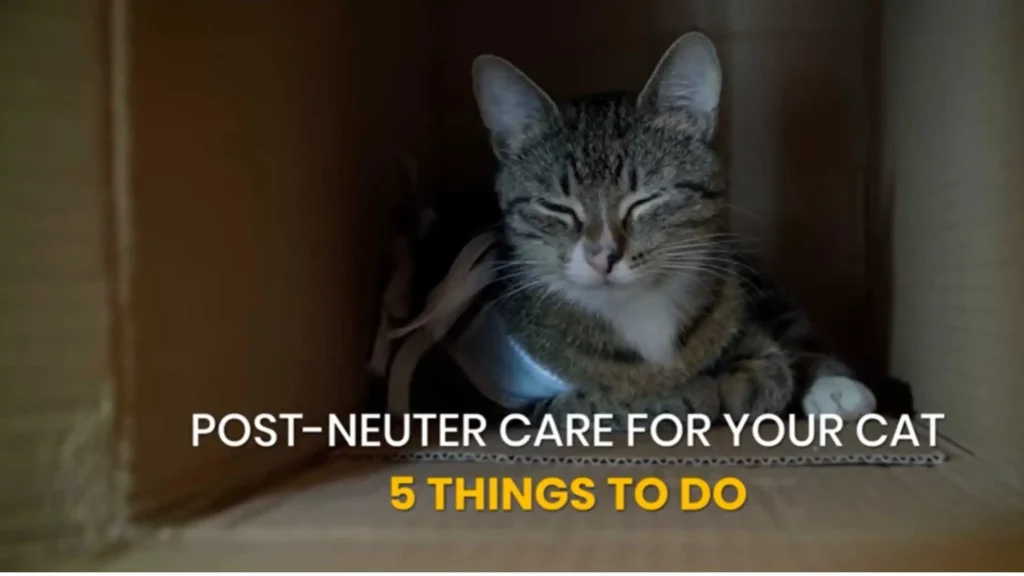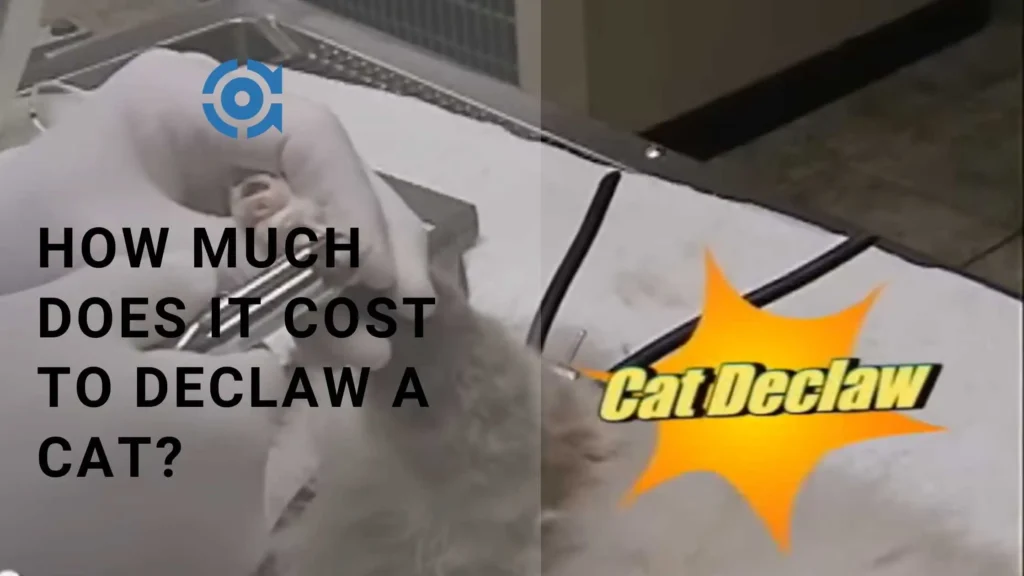The cost to declaw a cat typically ranges from $100 to $500. This price can vary based on the veterinary clinic and the chosen declawing method.
Declawing a cat is a controversial and significant surgical procedure that involves the removal of the last bone in each toe from which the claw grows. This surgery is akin to amputating each fingertip at the last joint in a human.
Pet owners often consider declawing to prevent furniture damage or personal injury, but it’s important to weigh the ethical implications and potential health risks to the cat. Many veterinarians advocate for alternative solutions to declawing, such as regular nail trimming or the use of nail caps, which are less invasive and preserve the cat’s paws. Before making a decision, it’s crucial to consult with a veterinarian to understand all options and the impacts of declawing on a cat’s well-being.
Introduction To Cat Declawing

Declawing a cat means removing its claws. This is a serious surgery. It can be painful for cats. People choose declawing to stop cats from scratching furniture or humans. Understanding this process is key before making a decision.
Reasons For Declawing
Owners declaw cats for several reasons:
- To protect furniture from scratches.
- Prevent injuries to people, especially kids.
- Due to landlord requirements.
Ethical Considerations
Declawing raises ethical questions. It can change a cat’s behavior and health. Many vets and animal rights groups oppose it. They suggest other ways to manage scratching. It’s important to consider alternatives like trimming nails or using scratch posts.
Understanding The Procedure
Before discussing the costs of declawing a cat, it’s vital to understand what the procedure entails. Declawing is not just a nail trim but a surgical procedure that can affect your cat’s health and behavior. Now, let’s explore the different surgical methods used for declawing.
Surgical Methods
Declawing a cat involves removing the claw and the bone it grows from. This prevents the claw from regrowing. Vets perform this surgery under anesthesia to ensure your cat doesn’t feel pain during the operation.
Laser Declawing
Laser declawing is a modern technique where vets use a laser to remove the claw. This method causes less bleeding and pain. Recovery times are often shorter compared to traditional surgery. It’s usually more expensive due to the advanced equipment used.
Tendonectomy
A tendonectomy is an alternative procedure where the tendons controlling the claw’s movement are cut. Cats keep their claws but cannot extend them. This procedure has its risks and may lead to abnormal claw growth. It’s important to discuss this option with your vet.
Pre-surgery Considerations

Before taking your cat for declawing, consider some important steps. These steps ensure your cat’s safety and health. Each step involves certain costs. Understanding these can help you prepare both financially and mentally. Let’s dive into the key pre-surgery considerations.
Consultation Costs
The first step is a consultation with a vet. This meeting is crucial. It helps the vet understand your cat’s health and needs. During this time, the vet will explain the declawing process. They will also talk about the care your cat will need afterward. The cost for this consultation can vary. It usually ranges between $40 and $100. This cost depends on the vet’s experience and location.
Pre-operative Bloodwork
Before surgery, your cat needs blood tests. These tests check for any hidden health issues. They ensure your cat is fit for surgery. The tests can reveal problems like anemia or infections. Catching these early can save your cat from complications. The cost for pre-operative bloodwork ranges from $70 to $200. This range depends on the tests the vet finds necessary.
In summary, preparing for a cat’s declawing involves both consultation and bloodwork. These steps are vital for your cat’s safety. They also help you understand the costs involved. Make sure to budget for these costs to avoid any surprises.
Breakdown Of Declawing Costs
Understanding the Breakdown of declining costs is important for cat owners. This process is not just a simple procedure. It involves various steps, each with its own cost. Let’s dive into the details.
Anesthesia Fees
Anesthesia is crucial for this surgery. It keeps your cat pain-free and still. The cost varies based on the cat’s weight and health. On average, expect to pay $40 to $100.
Surgical Expenses
The core of the expense comes from the surgical procedure. It requires precision and care. This part can cost between $100 and $250. Factors like clinic location and the surgeon’s expertise may influence the price.
Pain Management And Medication
After surgery, managing your cat’s pain is essential. Medication for pain relief and antibiotics to prevent infection are needed. These medications generally range from $25 to $50.
| Expense Category | Cost Range |
|---|---|
| Anesthesia Fees | $40 – $100 |
| Surgical Expenses | $100 – $250 |
| Pain Management and Medication | $25 – $50 |
- Total cost can range from $165 to $400.
- Costs vary by location, vet, and your cat’s needs.
Remember, these are average costs. Your final bill may vary. Always ask your vet for a detailed estimate before proceeding.
Post-surgery Care

After your cat undergoes declawing, proper post-surgery care is crucial. A successful recovery depends on careful monitoring and follow-up visits to the veterinarian. This care ensures your feline friend heals well and returns to their playful self. Let’s dive into the specifics of post-surgery care for a declawed cat.
Recovery Monitoring
Keep an eye on your cat’s behavior post-surgery. Watch for signs of pain or discomfort. Changes in appetite or activity levels often signal something amiss. Your cat’s paws may be bandaged, and it’s essential to check for bleeding or swelling. Keep their living area clean and quiet to help them relax. Avoid litter that can irritate their paws; instead, use shredded paper or a commercial paper-based litter product.
Follow-up Visits
Post-surgery, schedule follow-up visits with your vet. These check-ups are vital to ensure proper healing. Your vet might need to remove sutures or provide additional care. They’ll also assess your cat’s pain management needs. Follow the vet’s instructions closely and never miss a scheduled appointment.
Remember, your cat depends on you to help them through their recovery. With attentive post-surgery care, they’ll be on the path to healing and comfort.
Potential Complications And Additional Costs
Deciding to declaw a cat comes with not just a price tag but also the risk of potential complications and additional costs. Each cat reacts differently, and sometimes, things don’t go as planned. Let’s dive into what these extra hurdles might include.
Infection Treatment
Infections are a common risk post-declawing. They can make your cat very sick. Signs include redness, swelling, and pus. Treating infections involves more visits to the vet, which means more bills. Here’s a breakdown of possible extra costs:
- Antibiotics: $20-$50
- Follow-up vet visits: $50-$100 per visit
- Pain medication: $10-$30
These prices can add up, depending on how severe the infection is.
Behavioral Therapy
Some cats change after declawing. They might stop using the litter box or start biting. Behavioral therapy might be needed to help them adjust. This can include:
- Consultation with a pet behaviorist: $100-$200
- Behavior modification plans: $50-$150
- Follow-up sessions: $50-$100 per session
Behavioral therapy costs vary widely. They depend on the cat’s needs and the specialist’s rates.
Both infection treatment and behavioral therapy add to the total cost of declawing. Owners must prepare for these potential extra expenses. Your cat’s health and happiness are important. Always consider these factors before making a decision.
Alternatives To Declawing
Considering the cost and ethical concerns of declawing a cat, pet owners seek gentler solutions. These alternatives protect furniture without harming your furry friend. Explore options like scratching posts, nail caps, and training.
Scratching Posts
Scratching posts serve a cat’s natural need to claw. Offer various materials and shapes. Sisal fabric, carpet, and cardboard are favorites. Place posts near sleeping areas and furniture. Ensure they are sturdy and tall enough for a full stretch.
Nail Caps
Nail caps provide a non-surgical option to protect against scratches. They are small plastic covers for your cat’s claws. A vet or pet owner applies them with safe adhesive. They last 4-6 weeks and come in many colors. Nail caps allow normal claw extension and retraction.
Training
- Use positive reinforcement when cats use scratching posts.
- Start training early for best results.
- Redirect from furniture to posts with toys or catnip.
Consistent training can teach cats where to scratch. This protects your home and keeps your cat’s claws intact.
Financial Assistance And Insurance
Tackling the cost of declawing a cat can be daunting. Pet owners often feel the pinch of vet bills. Financial assistance and insurance options exist to ease this burden.
Pet Insurance Policies
Many pet insurance policies cover a range of procedures, including declawing. Policy details vary, so it’s crucial to check the fine print. Some plans may classify declawing as an elective procedure, potentially affecting coverage.
- Check coverage limits and deductibles before proceeding.
- Compare different insurers to find the best fit for your cat’s needs.
- Some plans may offer partial reimbursements for declawing.
Charitable Organizations
Several charitable organizations assist pet healthcare. These groups may offer grants or funds specifically for procedures like declawing.
- Organizations such as the Pet Fund support owners with veterinary care costs.
- Local animal shelters might also have resources or recommendations.
Payment Plans
Veterinary clinics sometimes offer payment plans. This breaks down the cost of declawing into manageable monthly payments.
- Ask your vet about in-house financing options.
- CareCredit is a healthcare credit card that could be used for pet health services.
Remember, declawing is a significant procedure. Explore all financial options before making a decision. Always consult with a vet to understand the full implications.
Frequently Asked Questions of How Much Does It Cost to Declaw a Cat?
Will Vets Still Declaw Cats?
Some vets may still declaw cats, though it’s increasingly uncommon due to ethical concerns and legal restrictions in certain areas. Always consult with your veterinarian.
Is It Okay To Declaw An Indoor Cat?
Declawing indoor cats is generally discouraged due to pain and potential behavioral changes; alternatives like scratching posts are recommended.
What Is The Best Age To Declaw A Cat?
The ideal age to declaw a cat is generally around 3-6 months, coinciding with spaying or neutering. However, many vets discourage declawing due to welfare concerns.
What States Is It Illegal To Declaw A Cat?
Declawing cats is illegal in New York, Maryland, and several California cities including Los Angeles and San Francisco.
Conclusion
Deciding to declaw a cat involves both ethical considerations and financial implications. Costs vary widely, influenced by location, vet experience, and chosen procedure. Before proceeding, weigh the pros and cons and explore alternative solutions to protect both your pet’s wellbeing and your home.
Remember, a well-informed decision is the kindest act of care.


